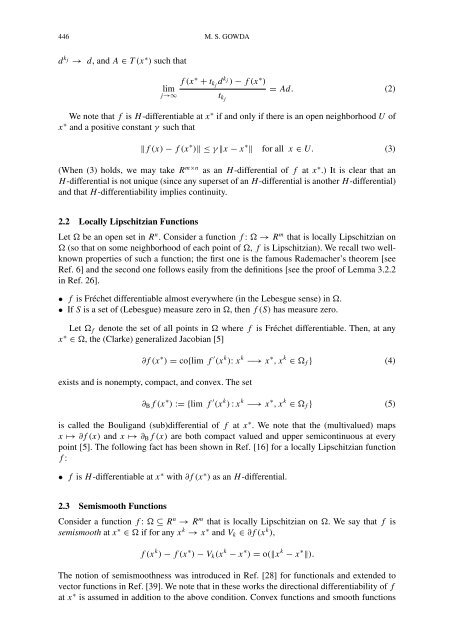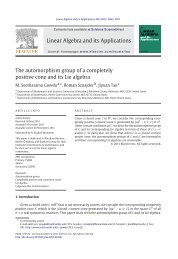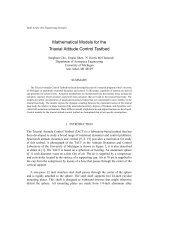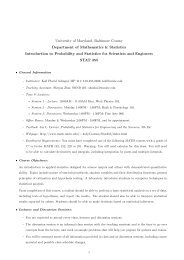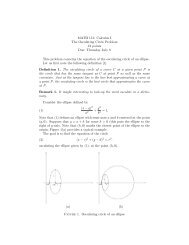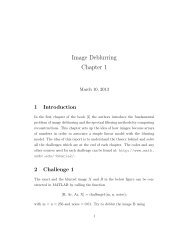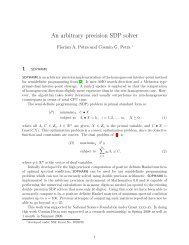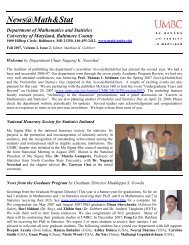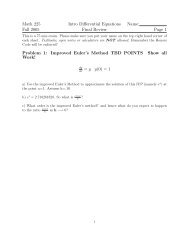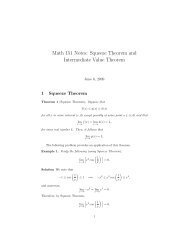inverse and implicit function theorems for h-differentiable and ...
inverse and implicit function theorems for h-differentiable and ...
inverse and implicit function theorems for h-differentiable and ...
- No tags were found...
Create successful ePaper yourself
Turn your PDF publications into a flip-book with our unique Google optimized e-Paper software.
446 M. S. GOWDAd k j → d, <strong>and</strong> A ∈ T(x ∗ ) such thatf(x ∗ + t kj d k j ) − f(x ∗ )lim= Ad. (2)j→∞ t kjWe note that f is H -<strong>differentiable</strong> at x ∗ if <strong>and</strong> only if there is an open neighborhood U ofx ∗ <strong>and</strong> a positive constant γ such that‖f(x)− f(x ∗ )‖≤γ ‖x − x ∗ ‖ <strong>for</strong> all x ∈ U. (3)(When (3) holds, we may take R m×n as an H -differential of f at x ∗ .) It is clear that anH -differential is not unique (since any superset of an H -differential is another H -differential)<strong>and</strong> that H -differentiability implies continuity.2.2 Locally Lipschitzian FunctionsLet be an open set in R n . Consider a <strong>function</strong> f : → R m that is locally Lipschitzian on (so that on some neighborhood of each point of , f is Lipschitzian). We recall two wellknownproperties of such a <strong>function</strong>; the first one is the famous Rademacher’s theorem [seeRef. 6] <strong>and</strong> the second one follows easily from the definitions [see the proof of Lemma 3.2.2in Ref. 26].• f is Fréchet <strong>differentiable</strong> almost everywhere (in the Lebesgue sense) in .• If S is a set of (Lebesgue) measure zero in , then f(S)has measure zero.Let f denote the set of all points in where f is Fréchet <strong>differentiable</strong>. Then, at anyx ∗ ∈ , the (Clarke) generalized Jacobian [5]∂f (x ∗ ) = co{lim f ′ (x k ): x k −→ x ∗ ,x k ∈ f } (4)exists <strong>and</strong> is nonempty, compact, <strong>and</strong> convex. The set∂ B f(x ∗ ) := {lim f ′ (x k ) : x k −→ x ∗ ,x k ∈ f } (5)is called the Boulig<strong>and</strong> (sub)differential of f at x ∗ . We note that the (multivalued) mapsx ↦→ ∂f (x) <strong>and</strong> x ↦→ ∂ B f(x) are both compact valued <strong>and</strong> upper semicontinuous at everypoint [5]. The following fact has been shown in Ref. [16] <strong>for</strong> a locally Lipschitzian <strong>function</strong>f :• f is H -<strong>differentiable</strong> at x ∗ with ∂f (x ∗ ) as an H -differential.2.3 Semismooth FunctionsConsider a <strong>function</strong> f : ⊆ R n → R m that is locally Lipschitzian on . We say that f issemismooth at x ∗ ∈ if <strong>for</strong> any x k → x ∗ <strong>and</strong> V k ∈ ∂f (x k ),f(x k ) − f(x ∗ ) − V k (x k − x ∗ ) = o(‖x k − x ∗ ‖).The notion of semismoothness was introduced in Ref. [28] <strong>for</strong> <strong>function</strong>als <strong>and</strong> extended tovector <strong>function</strong>s in Ref. [39]. We note that in these works the directional differentiability of fat x ∗ is assumed in addition to the above condition. Convex <strong>function</strong>s <strong>and</strong> smooth <strong>function</strong>s


